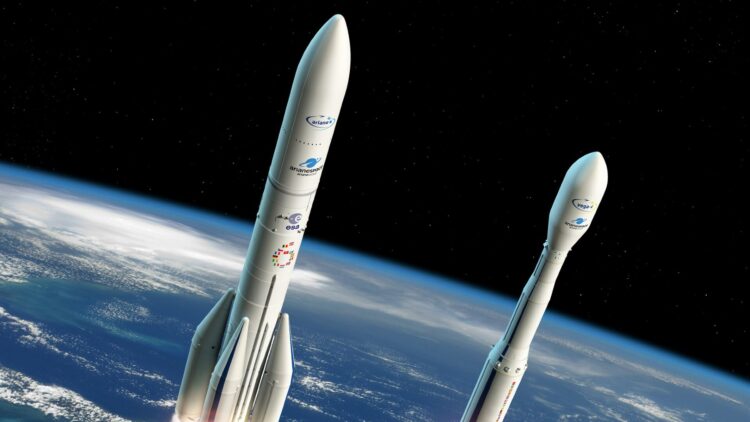Since time immemorial, human beings have had interests in space, and its exploration continues to inspire great inventions. The newest step in space exploration is the development of a hydrogen-powered rocket —the grandiose Ariane 6 mission.
As the new generation launcher, Ariane 6 is expected to transform space transport by integrating innovative technologies, environmental friendliness, and improved productivity. With liquid hydrogen as a primary fuel source, this business is innovative and a move towards greening space travel.
Hydrogen propulsion: paving the path for sustainable space travel
Liquid hydrogen used by Ariane 6 as fuel is an indication of the increasing sustainability trends in aerospace engineering. Liquid hydrogen burns with liquid oxygen to make the Vulcain 2.1 engine, which delivers 138 tonnes of thrust. This combination is highly efficient. The only product formed during combustion is water.
By reducing environmental impact, Ariane 6 addresses one of the most pressing challenges of modern rocketry: strategies for managing the dual challenge of innovation and the environment. The hydrogen-fed main stage is designed to provide the necessary robustness for such conditions. Cryogenic tanks must store liquid hydrogen at −253 °C; hence, the structure’s mechanical and thermal properties are paramount.
Technological improvements in welding procedures and lightweight aluminum-lithium alloys increase the rocket’s general performance, providing high thrust but low weight. This layout enables the main stage to operate effectively during the initial and most crucial 600 seconds in flight. In addition, Ariane 6 has modularity in its design, which affords flexibility.
The available options of two (Ariane 62) or four (Ariane 64) boosters guarantee the flexibility of the rocket in handling payloads of different sizes and destinations. Such flexibility is crucial for many missions ranging from mere deployment of satellites into space to space exploration. This focus on hydrogen propulsion is a new development in the space industry that demonstrates that sustainability and performance are possible.
In this respect, Ariane 6 is a model for future rockets intended to be environmentally friendly but simultaneously deliver extraordinary performance.
Modular versatility: revolutionizing payload delivery
The most significant difference between Ariane 6 and its predecessors lies in its modular construction. As a result of the flexible configuration and the enhanced upper stage, the rocket is designed to support various operations. This flexibility enables payload delivery to one or several orbits within a single flight.
The upper stage, with the French restartable Vinci engine, embodies flexibility. The Vinci engine that uses cryogenic liquid hydrogen and oxygen can be reignited up to four times to help place satellites in different orbits. This capability dramatically improves mission effectiveness and opens up the possibility of affordable and versatile multiple payload missions.
The solid boosters of Ariane 6 labeled P120C models are the main features that make Ariane 6 the most flexible launch vehicle available. Every booster generates 4500 kN of thrust and is powerful enough to get the rocket’s payload off the ground. Two or four boosters are available to provide mission planners with performance options depending on mission needs. This modularity is an engineering advantage that makes Ariane 6 capable of accommodating commercial and scientific payloads.
Furthermore, Ariane 6 is built with space debris mitigation in consideration. The upper stage can also return to the Earth after accomplishing its function without adding to the amount of space debris in orbit. This feature supports international endeavors to ensure that the sustainability of space activities is preserved in the long run.
Challenges and triumphs: engineering Ariane 6
Developing a rocket with hydrogen, such as Ariane 6, has not been easy. Handling liquid hydrogen and oxygen requires the application of high-technology methods in storing and moving the substances. These fuels must be maintained at very low temperatures, which requires special insulation and pressure-regulating equipment.
Combining the Vinci engine and Auxiliary Propulsion Unit (APU) makes Ariane 6 even more complicated. The APU charges the fuel tanks and supplies more power when needed, so it is very accurate in maneuvering in space. Such systems demonstrate that Ariane 6 development was possible through the joint work of scientists and engineers.
Ariane 6 is a giant leap closer to sustainable space development and advancement in the industry. This rocket uses hydrogen power, and with it, environmentally friendly missions are made possible while enjoying extraordinary flexibility and performance.
The modularity of its design, propulsion systems, and, most of all, its debris avoidance policies are a clear sign of a world where space travel and sustainability go hand in hand. With the start of the countdown, Ariane 6 is ready to promote the human endeavor to reach further and reshape our space adventure.

